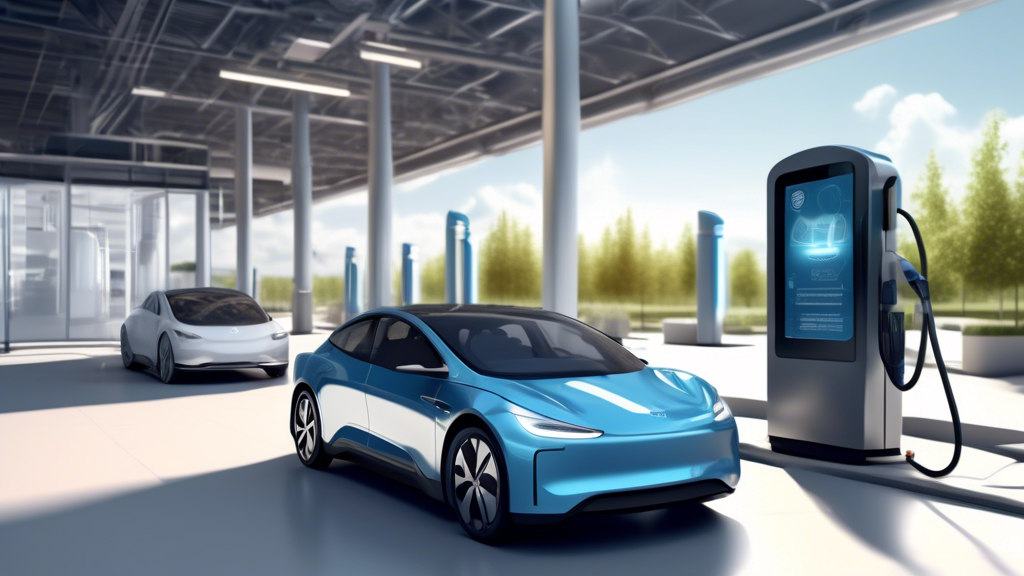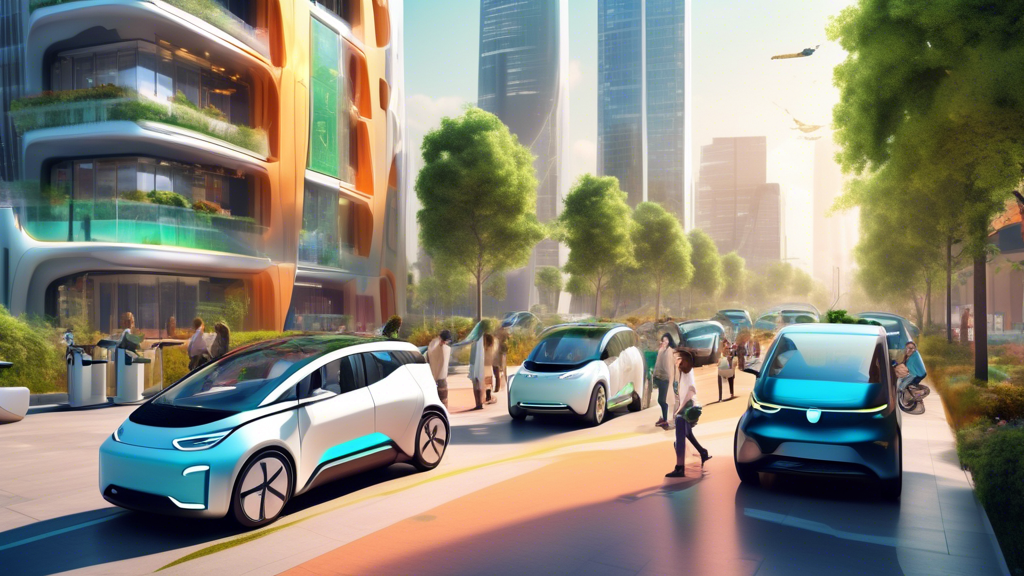Is the era of affordable electric vehicles finally here? Recent trends in EV pricing suggest a revolution on the horizon. Imagine driving home in a sleek, eco-friendly EV without putting a dent in your wallet. This is becoming a reality as the prices of electric vehicles drop significantly. But what’s driving this descent into affordability?
Several factors contribute to this exciting trend. Advances in battery technology and production methods have played a crucial role. Enhanced competition among automakers also fuels price reductions. Additionally, government incentives and subsidies make EVs more appealing, while economies of scale kick in as manufacturers ramp up production.
This shift in the EV market is monumental for consumers and the automotive industry. Lower EV prices mean that more people can access the benefits of electric cars. It also shakes up the traditional gasoline vehicle market and paves the way for environmental gains through reduced carbon emissions.
As you read on, you’ll discover the key reasons behind the drop in EV prices and what this means for the future. Get ready to be part of the electric revolution—one that’s greener, more economical, and increasingly within reach.
Introduction: The Changing Landscape of Electric Vehicle (EV) Pricing
Have you noticed that electric vehicle (EV) prices are dropping like a new hit single? This shift is shaking up the automotive market, promising a future that’s not just electric but also budget-friendly.
Overview of the Recent Trend in EV Price Reductions
In recent years, EV prices have been steadily declining. From upscale models to more affordable options, consumers now have a wider range of choices. It’s not just a fleeting phenomenon; it’s a sustained trend that points towards a seismic shift in the automotive landscape.
Before you start picturing yourself zipping around in a shiny new EV, let’s explore what’s pushing these prices down. Is it magic? Technological revolution? Spoiler alert: it’s a bit more complex than that.
Factors Contributing to the Drop in EV Prices
Several factors contribute to these appealing price tags. Technological advancements, increased market competition, and government incentives are just a few of the key drivers. Let’s dive into each one.
- Advancements in Battery Technology: Improved battery efficiency and reduced production costs are significant contributors.
- Increased Competition: More automakers are entering the EV market, resulting in competitive pricing.
- Government Incentives: Subsidies and tax breaks are making EVs more accessible.
These factors don’t just lower prices—they redefine the entire market. Consumers benefit from enhanced affordability, and automakers profit from the expanded customer base. It’s a win-win scenario.
Importance of This Trend for Consumers and the Automotive Market
Why should you care about these trends? For consumers, lower EV prices mean broader accessibility. You no longer need to be an environmental enthusiast with deep pockets to afford an EV. Even everyday drivers can transition to electric, reducing their carbon footprint along the way.
For the automotive market, this trend is a game-changer. Traditional gasoline vehicles face increasing competition from their electric counterparts. This shift forces automakers to innovate and adapt, driving industry-wide progress. As EVs become more prevalent, they pave the way for a cleaner, more sustainable transportation sector.
So, ready to embrace the future on a budget? The changing landscape of EV pricing makes it easier than ever.

Key Reasons Behind the Decrease in EV Prices
Advancements in Battery Technology and Production
Have you noticed how the price of an electric vehicle (EV) has dropped recently? One major reason is battery technology. Breakthroughs in this area are making batteries cheaper and more efficient. New materials and improved manufacturing processes are driving this change. Doesn’t it seem like batteries are the star of the show?
Increased Competition Among Automakers
Remember when only a few companies made EVs? Now, major car manufacturers are jumping into the EV market. Tesla, Nissan, and BMW have to compete, resulting in lower prices. Who knew competition could be this good for consumers? This rivalry drives innovation and forces companies to offer more for less.
Government Incentives and Subsidies
Are you aware of the financial perks for buying an EV? Governments worldwide offer various incentives to encourage EV adoption. Tax breaks, rebates, and credits make EVs more affordable. This support has led to a significant drop in the upfront cost for consumers. When was the last time you saw the government saving you money like this?
Economies of Scale as Production Ramps Up
More EVs on the road mean higher production volumes, which leads to economies of scale. Manufacturers can reduce costs as they ramp up production. Bulk buying of materials and streamlined assembly lines contribute to the price drop. Ever noticed how things get cheaper when everybody starts buying them?
Understanding these key factors illuminates how EVs are becoming more accessible and financially attractive. Ready to make the switch yet?

Implications of Lower EV Prices for the Future
Increased Accessibility and Adoption of EVs Among Broader Demographics
Have you ever wondered what it would take for electric vehicles (EVs) to truly become mainstream? Lower prices might be the answer. With EV prices dropping, more people can now afford this sustainable technology. This isn’t just good news for tech enthusiasts; it’s a significant shift for average consumers, too. Imagine a family weighing the cost of an EV against a traditional car and finding the EV not just viable, but cheaper in the long run due to lower maintenance and fuel costs.
Impact on the Traditional Gasoline Vehicle Market
Think traditional gasoline cars are safe from this EV revolution? Think again. As more consumers opt for electric, the demand for gasoline vehicles will inevitably decline. Car manufacturers will likely shift resources towards EV production, driving innovation and competition even further. Expect more brands to expand their electric offerings and improve their technology. This transition could signal the twilight years for gasoline engines, much like the horse-drawn carriage was outmoded by the Model T.
Potential Environmental Benefits and Reduction in Carbon Emissions
Now, let’s dive into the greener side of things. Lower EV prices mean more electric vehicles on the roads, which translates to fewer greenhouse gases. A higher EV adoption rate could significantly cut down collective carbon emissions. Imagine city streets with cleaner air and less noise pollution. Enthusiasts talk about saving the planet one EV at a time, and with falling prices, this lofty goal moves closer to reality.
Future Trends and Predictions in the EV Market Pricing and Innovation
So, what does the future hold? As technology advances, expect even more price reductions and innovation. Autonomous driving features, longer battery life, and quicker charging times will become standard. Some experts predict that within a decade, EVs will be more affordable than their gasoline counterparts across all segments. Fasten your seatbelt, the road ahead is thrilling. In essence, the ripple effects of lower EV prices today will shape the automotive landscape for years to come.
Lower EV prices signal a transformative shift in the automotive industry. With advancements like improved battery technology and heightened competition, EVs are no longer luxury items reserved for a select few. These price reductions pave the way for greater accessibility, allowing a broader demographic to consider making the switch to electric.
Increased government incentives and subsidies further sweeten the deal, making EV ownership not just a possibility but a practical, economical choice. As production scales up, the benefits multiply. Economies of scale contribute to the continuous fall in prices, creating a ripple effect that benefits consumers and manufacturers alike.
Imagine a world where EVs outnumber traditional gasoline vehicles. Lower emissions, cleaner cities, and a significant step towards combating climate change—these are no longer mere fantasies. The automotive landscape is evolving, and with it, the promise of a more sustainable future.
With all signs pointing towards continued innovation and pricing improvements, one must ask: is it time to rethink our next vehicle purchase? The road ahead shines brighter for EVs, not just illuminated by their headlights, but by the positive changes they foreshadow.
